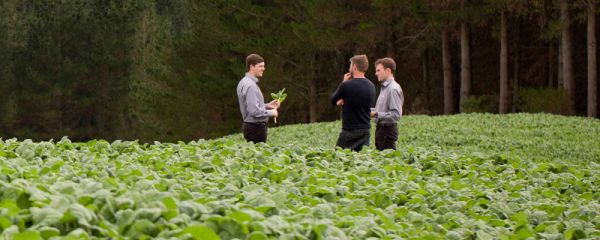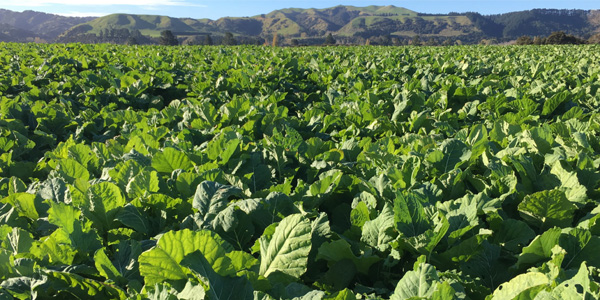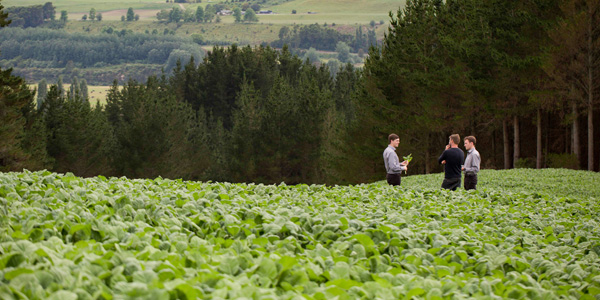
Brassica Pests & Diseases
Brassica Pests & Diseases
Key Pests and Diseases Affecting Brassica Seedlings |
||
|---|---|---|
|
Condition |
Impact on Plant |
Control |
|
Seedling Insect Pests |
||
|
Springtails (Bourletiella spp.) |
Attack cotyledons and emerging plants, smooth edge damage, damaging until the 4th leaf stage |
Ultrastrike® or Superstrike® seed treatment, chemical, crop rotation and hygiene |
|
Greasy cutworm (Agrotis ipsilon aneituma) |
Plants, especially seedlings ripped off at or just below ground level, young plants wilt |
Chemical, crop rotation and hygiene |
|
Grass grub (Costelytra zealandica) |
Adults attack young growing points, larvae attack seedling roots |
Chemical |
|
Wheat bug (Nysius huttoni) |
Ring barking of seedlings at ground level leaves plants susceptible to other attacks, damage is similar to that caused by wirestem |
Ultrastrike + chemical |
|
Weevils (Catopes spp.) |
Chew cotyledons or stem at ground level, scalloping of leaf edge |
Chemical |
|
Slugs (many species) |
Creates severe damage to brassica plants by destroying seedlings |
Minimise crop residual or trash before directdrilling, use slug baits, cultivate paddocks |
|
Seedling Fungal Diseases |
||
|
Wirestem/strangles (Rhizoctonia solani) |
Brown lesions at ground level, narrowing of root and stem base, often caused by strangles, damage similar to that caused by wheat bug. Wirestem/ Strangles - damage to sap flow from abrasion at ground level by wind etc. Affected tissue susceptible to fungal attack (wirestem) |
Ultrastrike® or Superstrike® seed treatment, chemical |
|
Damping off (Fusarium and Pythium) |
Affects seedlings in the first few weeks after sowing. Infected seedlings either fail to emerge or recently emerged plants can collapse, with plants revealing shrivelling and discolouration at the shoot base |
Ultrastrike® or Superstrike® seed treatment |
Key Pests and Diseases in Established Brassica Crops |
||
|---|---|---|
|
Condition |
Impact on Plant |
Control |
|
Plant Pests |
||
|
Aphids (many species) |
Sap suckers that weaken plants, reduce yields, carry viral diseases, mainly attack summer crops |
Tolerant cultivars to certain aphid species, Ultrastrike® seed treatment, chemical |
|
Diamondback moth (Plutella xylostella) |
Young larvae burrow in and feed on internal leaf tissue, older larvae feed on lower leaf surfaces, larvae damage is often holes, some quite large, similar to white butterfly caterpillar |
Chemical |
|
White butterfly (Pieris rapae) |
Leaf feeding leaves skeletonised leaf with leaf ribs remaining |
Chemical |
|
Leaf miners (many species) |
Larvae create tunnels and live within leaf tissue, tissue damage may reduce photosynthetic activity and cause leaf yellowing, premature leaf death and limit growth at this time. Damage is similar to that caused by Diamondback moth |
Chemical |
|
Crop Viruses |
||
|
Turnip mosaic |
Stunted growth, mottling and crinkled leaves, yellowing, leaf death, poor bulb development |
Control of vector aphids |
|
Beet western yellows |
General stunted growth, purpling of leaves |
Control of vector aphids |
|
Cauliflower mosaic |
Poor vigour, can attack all brassica species |
Control of vector aphids |
|
Crop Fungal Diseases |
||
|
Clubroot (Plasmodiophora spp.) |
Causes irregular swelling of root, leaf wilting, stunted growth and plant death |
Crop rotation (6 years in high risk areas), hygiene, reduce double cropping |
|
Dry rot (Leptosphaeria maculans) |
Affects swedes mainly, small sunken brown-grey circular spots on leaf or bulb neck, plant death |
Crop rotation and hygiene, more tolerant cultivars, reduce double cropping |
|
Ring spot (Mycosphaerella brassicicola) |
Small dark spots on older leaves in cool wet conditions |
Crop rotation |
|
Leaf spot (Alternaria spp.) |
Small dark lesions and dark sooty mould on leaves, may lower yields |
Chemical |
|
Black rot (Xanthomonas campestris) |
Attack on vascular system in warm humid conditions, yellowing of leaf margins, wilting, leaf loss |
Crop rotation |
|
Rust |
Orange spores cover leaf surfaces. Effect on yield is yet to be confirmed |
Research ongoing |
|
Powdery Mildew |
White powdery substance on leaf surface. Evidence suggests a yield reduction may occur |
Research ongoing |
|
Crop Nutrient Deficiencies |
||
|
Brown heart |
Boron deficiency, affects bulb crops |
Soil testing, boron fertiliser application |

See our Brassica range
VIEW PRODUCTS


